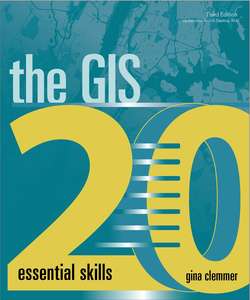Читать книгу The GIS 20 - Gina Clemmer - Страница 4
На сайте Литреса книга снята с продажи.
A note to the reader
ОглавлениеHey, reader. This book is an extension of my passion to help everyday people quickly learn the fundamentals of ArcGIS®. I have taught students 16 to 85 years old from all walks of life—fishing villages in Alaska, executives in Times Square, bureaucrats in Washington, DC. And with slight variation, they all wanted to do the same key things with ArcGIS. The three main requests are reference mapping, thematic mapping, and geocoding. It is my hope to have provided you with 20 easy-to-follow exercises that illustrate these principles.
Over the past decade, it has been my passion to provide an applied approach to teaching geographic information systems (GIS) to busy professionals. I believe the fundamentals of GIS (and ArcMapTM, specifically) can be taught in the following ways:
quickly. I do not believe GIS is the deeply complicated discipline many make it out to be.
using a project-based paradigm in which completing a concrete task is the goal versus using a layered or building-block approach. In other words, I don’t think you must know the inner workings of the GIS to create common types of maps.
by learning what is most frequently used by most people (and therefore most important to understand) and skipping the rest. I do not believe you must know every aspect of ArcMap to successfully complete common GIS tasks.
using everyday language versus technical jargon.
The 20 chapters that follow reflect 20 years of market research from 20,000 students asking me “How do I …?” These students were just like you: new to GIS, some excited about the prospect of being able to map their data, some only there because their bosses said they had to be—but after learning the fundamentals of ArcGIS, all were GIS converts.
Once you see the power of GIS, and see that you yourself can create maps easily, you simply can’t unsee it. GIS will change the way you think about presenting data and solving problems. It is my hope to give you ideas and tools, and through sophisticated problem-solving and the persuasion of maps, you can go out there and do good work and make the world a better place.
Gina Clemmer
Portland, Oregon
September 2017
